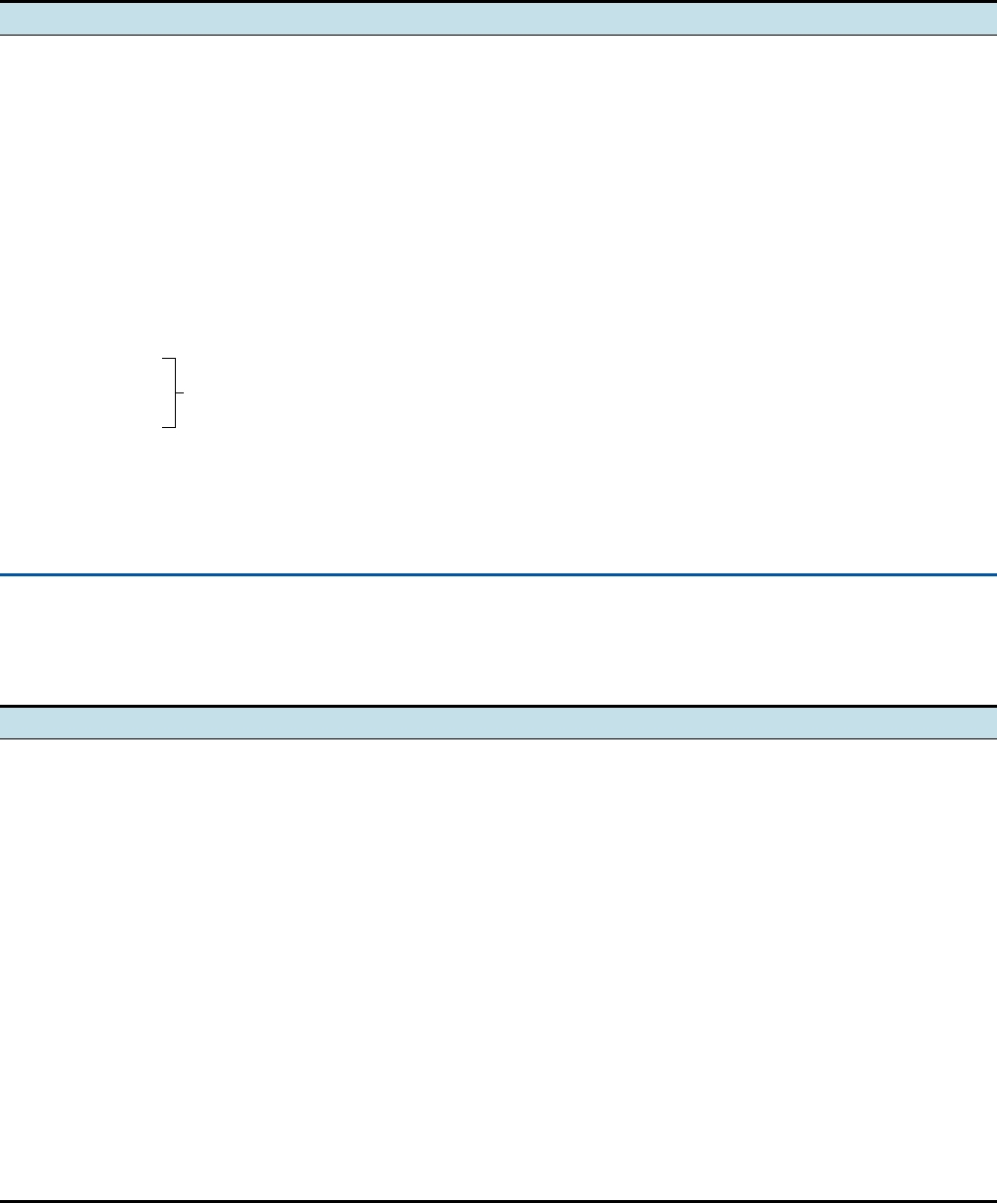DNA-Containing Viruses
includes the presence of cellular factors required for DNA
INTRODUCTION
replication as well as an increase in the amount of substrates
required for making DNA. Further, some viruses cause cells
Twenty-two families of viruses that contain double-
to proliferate, at least early in the infection cycle. For this
stranded DNA (dsDNA) as their genome are currently rec-
reason, most DNA viruses are at least potentially transform-
ognized by the International Committee on Taxonomy of
ing and many DNA viruses are known to cause tumors in
Viruses (ICTV). The families that contain viruses of verte-
humans or in other animals.
brates are listed in Table 7.1 together with their hosts, and
In contrast, the parvoviruses do not encode proteins that
those that contain viruses of nonvertebrates including bac-
stimulate cellular DNA replication. For this reason, they
teria are listed in Table 7.2. Unassigned genera of dsDNA
can only replicate in cells that are actively dividing and
viruses also exist and new families of these viruses will
their target tissues in the host are organs that undergo con-
continue to be recognized in the future. There are dsDNA
tinual renewal. Members of one genus of the Parvoviridae,
viruses that infect bacteria, archaea, amoebae, mycoplasma,
Dependovirus, require a helper virus for replication, and rep-
algae, fungi, invertebrates, and vertebrates, but interestingly
lication will occur only in cells coinfected with the helper.
there are no known dsDNA viruses of plants. Members of
Where studied, almost all viruses interfere with the
seven of these families infect vertebrates of which mem-
defenses of the vertebrate host against viruses and the large
bers of five families, the Poxviridae, the Herpesviridae, the
dsDNA viruses are particularly remarkable in this regard.
Adenoviridae, the Polyomaviridae, and the Papillomaviridae,
With their large genomes they can afford to dedicate doz-
infect humans and cause disease. Only these five families
ens of genes to the control of the host immune response.
are considered further. The genomes of these viruses vary in
Components of the host immune system that are targeted
size from about 5 to 375 kb.
include the interferon system, cytotoxic T-cell responses,
There are also five families of DNA viruses that contain sin-
other immune effector functions, and the complement sys-
gle-stranded DNA (ssDNA) as their genome, as listed in Table
tem. In part because of this ability to interfere with multi-
7.3. These viruses infect bacteria, mycoplasma, spiroplasma,
ple host defense systems, infection with some DNA viruses
plants, invertebrates, and vertebrates. Members of only one
results in a latent or a persistent infection that can endure
family, the Parvoviridae, infect humans and cause disease, and
for the life of the infected individual. Some aspects of these
only this family is considered further. The parvoviruses have
interference pathways are described in this chapter, where
a small genome (46 kb), from which they receive their name
needed to understand the replication cycle and epidemiol-
(Latin parvus = small). Note that in the classification used
ogy of the virus, but a more detailed description of defense
here, viruses with a DNA genome that replicate through an
mechanisms is presented in Chapter 10.
RNA intermediate, such as the hepadnaviruses and the cauli-
Some DNA viruses, such as the poxviruses and the
moviruses, are not referred to as conventional DNA viruses
adenoviruses, cause epidemics of symptomatic disease in
and were considered in Chapter 6.
vertebrates from which recovery is complete (if the infection
During infection, most vertebrate DNA viruses stimulate
is not fatal) and immunity is established. Other vertebrate
host-cell DNA replication, or at least the early stages of DNA
DNA viruses, such as the herpesviruses and the polyoma-
replication, in order to prepare a suitable environment for
viruses, establish long-term infections that persist despite
their own DNA replication. Such a favorable environment
TABLE 7.1
Double-Stranded DNA Viruses That Infect Humans and Other Vertebrates
Genome size (kb)a
Family/subfamily
Genera
Type species
Poxviridaeb
130375
Chordopoxvirinae
See Table 7.4
Entomopoxvirinae
Alphaentomopoxvirus
Melolontha melolontha entomopoxvirus
Betaentomopoxvirus
Amsacta moorei entomopoxvirus `L'
Gammaentomopoxvirus
Chironomus luridus entomopoxvirus
Iridoviridae
170200
Iridovirus
Invertebrate iridescent 6
Chloriridovirus
Invertebrate iridescent 3
Ranavirus
Frog 3
Lymphocystivirus
Lymphocystis disease 1
Megalocytivirus
Infectious spleen and kidney necrosis
Herpesviridae
~125235
Alphaherpesvirinae
Betaherpesvirinae
See Table 7.7
Gammaherpesvirinae
Ictalurivirus
Channel catfish herpesvirus
Adenoviridae
See Table 7.10
2025
Polyomaviridae
See Table 7.12
5
Papillomaviridae
See Table 7.14
8
Asfarviridae
Asfivirus
170
African swine fever
a
kb, kilobase pairs.
b
Viruses in families/genera in blue type all infect vertebrate hosts other than humans; families and subfamilies in red have members that infect humans.
TABLE 7.2
Families of Double-Stranded DNA Viruses That Infect Nonvertebrate Hosts
Genome sizea (kb)
Family
Genera
Type species
Host
Myoviridae
Six genera of phages
~170
Enterobacteria phage T4
Bacteria
Enterobacteria phage λ
Siphoviridae
Seven genera of phages
48.5
Bacteria
Podoviridae
Four genera of phages
40
Enterobacteria phage T7
Bacteria
Tectioviridae
Tectivirus
147157
Enterobacteria phage PRD1
Bacteria
Corticoviridae
Corticovirus
9
Alteromonas phage PM2
Bacteria
Plasmaviridae
Plasmavirus
12
Acholeplasma phage L2
Mycoplasma
Lipothrixviridae
Three genera of phages
15.9
Thermoproteus 1
Archaea
Rudiviridae
Rudivirus
?
Sulfolobus SIRV 1
Archaea
Fuselloviridae
Fusellovirus
15.5
Sulfolobus SSV 1
Archaea
Sulfolobus SNDVb
Guttaviridae
Guttavirus
?
Archaea
Phycodnaviridae
Six genera of algal viruses
>300
Paramecium bursaria Chlorella 1
Algae
Polydnaviridae
Ichnovirus
228
Campoletus sonorensis ichnovirus
Invertebrates
Bracovirus
228
Cotesia melanoscela bracovirus
Invertebrates
Ascoviridae
Ascovirus
120180
Spodoptera frugiperda ascovirus
Invertebrates
Baculoviridae
Nucleopolyhedrovirus
80180
Autographa californica nucleopolyhedrovirus
Invertebrates
Granulovirus
80180
Cydia pomonella granulovirus
Invertebrates
Nimaviridae
Whispovirus
300
White spot syndrome virus 1
Invertebrates
a
kb, kilobase pairs.
b
Now called sulfolobus neozealandicus droplet-shaped virus.
Search WWH :

